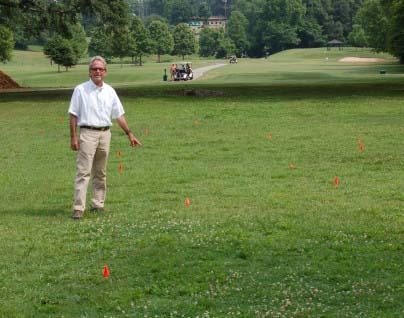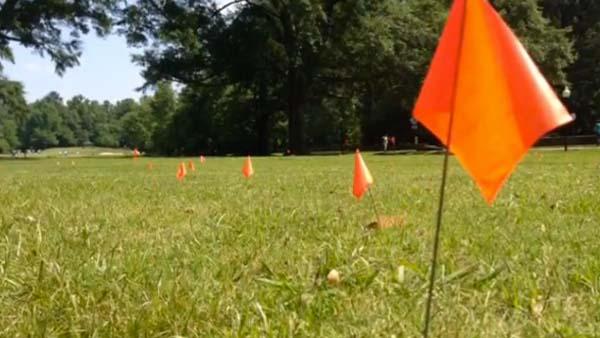 Dead bodies . . . dozens of 'em . . . buried beneath a golf course . . . in Georgia. Sounds like a movie, or the gruesome end to Atlanta's latest crime spree. Instead, the remains of more than 80 people detected underneath North Fulton Golf Course at Chastain Park on Atlanta's north side have been there since the early part of the 20th century when the land was used to house the city's indigent elderly population.
Dead bodies . . . dozens of 'em . . . buried beneath a golf course . . . in Georgia. Sounds like a movie, or the gruesome end to Atlanta's latest crime spree. Instead, the remains of more than 80 people detected underneath North Fulton Golf Course at Chastain Park on Atlanta's north side have been there since the early part of the 20th century when the land was used to house the city's indigent elderly population.Rumors of human remains under the course have been the subject of speculation for years thanks to a 1920s-era map of the property, and Ray Mock says he's known about it since he was named Chastain Park Conservancy director in 2003. And now, thanks to the latest in mapping technology, some light is being shed on exactly where this unmarked cemetery is and how many people are buried there. News of dozens of bodies buried beneath the golf course has generated a lot of interest, to Mock's amusement.
"We've known about this for years, we just didn't know exactly where was located. This isn't news, at least not to us," Ray said of the potter's field, a name typically given to unmarked plots of the indigent. "I was trying to scratch an itch. I just wanted to see where they were. Exactly where they were."
North Fulton is a city-owned course in Chastain Park that was designed by H. Chandler Egan and opened in 1935 . Egan, who died the year after North Fulton opened, was fresh off his 1929 renovation of Pebble Beach Golf Links. But long before Chastain Park was built, the area on which it and the golf course no rest once was the site of a public housing project for Atlanta's elderly indigent population.
The site included two buildings called Alms Houses, one for white residents and one for black that housed the indigent until the early 20th century. Because they were poor, residents of the buildings were buried in unmarked graves upon their death. There was a transition period of about 20 years between the closing the alms buildings and opening the park, Mock said. Today, the black almshouse is home to the Chastain Park arts center. The private Galloway School now occupies the building that once was the white almshouse.
 Although the existence of the potter's field might be common knowledge for Mock and others within the park system, its exact size and location have been somewhat of a mystery since the housing development was closed about 100 years ago. Also lost is any record of just who is buried out there, Mock said.
Although the existence of the potter's field might be common knowledge for Mock and others within the park system, its exact size and location have been somewhat of a mystery since the housing development was closed about 100 years ago. Also lost is any record of just who is buried out there, Mock said.Mock hired Omega Mapping Services to scan the property with ground-penetrating sonar. That revealed 84 separate graves in a field behind the golf course's No. 5 green that should be, for most normal shots, out of play.
"If you skull one from the front of the green, you're going to be playing your next shot from a cemetery," Mock said, detecting the irony in his words.
"Ever since all this excitement started I've been speaking in puns without even trying. I catch myself saying 'we've unearthed this' or 'we're digging for that.' I'm not trying to do it. It's just how things are coming out."
The cemetery presents no extra management duties for North Fulton superintendent Steve Kovacs, and the site will be left as is, and Mock said planting wildflowers on the site is a possibility.
It was important, Mock said, for someone to speak out for the voiceless and nameless buried beneath the golf course.
"Now we know exactly where this cemetery is," he said. "By preserving this area we know it will never be paved over or disturbed if the golf course is altered. If we don't mark it, it will be forgotten."
Mock isn't stopping at making sure the potter's field is preserved. He wants those buried there to be remembered, too. That is why the park is undertaking the task of pouring over county documents to hopefully some day identifying those buried there.
"We have 83 more to go because we've only been able to confirm one," Mock said. "We're calling it the forgotten cemetery because no one knows who is buried here. But they are real people buried here. It's time to recognize these poor souls. They were abandoned in their lifetime.
"It's going to take a lot of work on the research end, but we're going to try."

